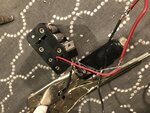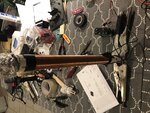weaver
Newbie level 4
i recently got interested in making a mini tesla coil and things have not been gong so well.I found some online references on how to make them, so i followed them and can not manage to produce any ac voltage. I am getting .5 volts on dc at the top of my coil, which is what my resistor is putting off. I used a mje3055 transistor, a 22k ohm resistor 26 and 14 gauge wire for the coils. i just cant find out why the circuit is not functioning. Any help would be appreciated.

- - - Updated - - -
Sorry about the pics here's the one I was trying for

- - - Updated - - -
Sorry about the pics here's the one I was trying for

